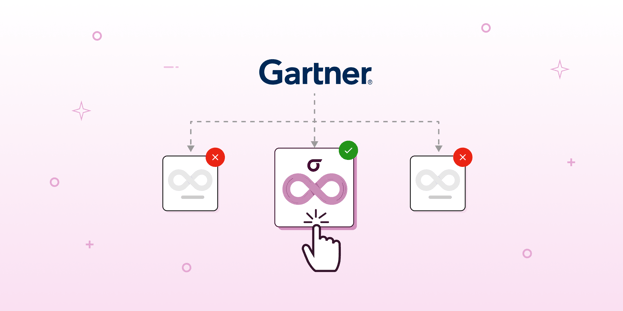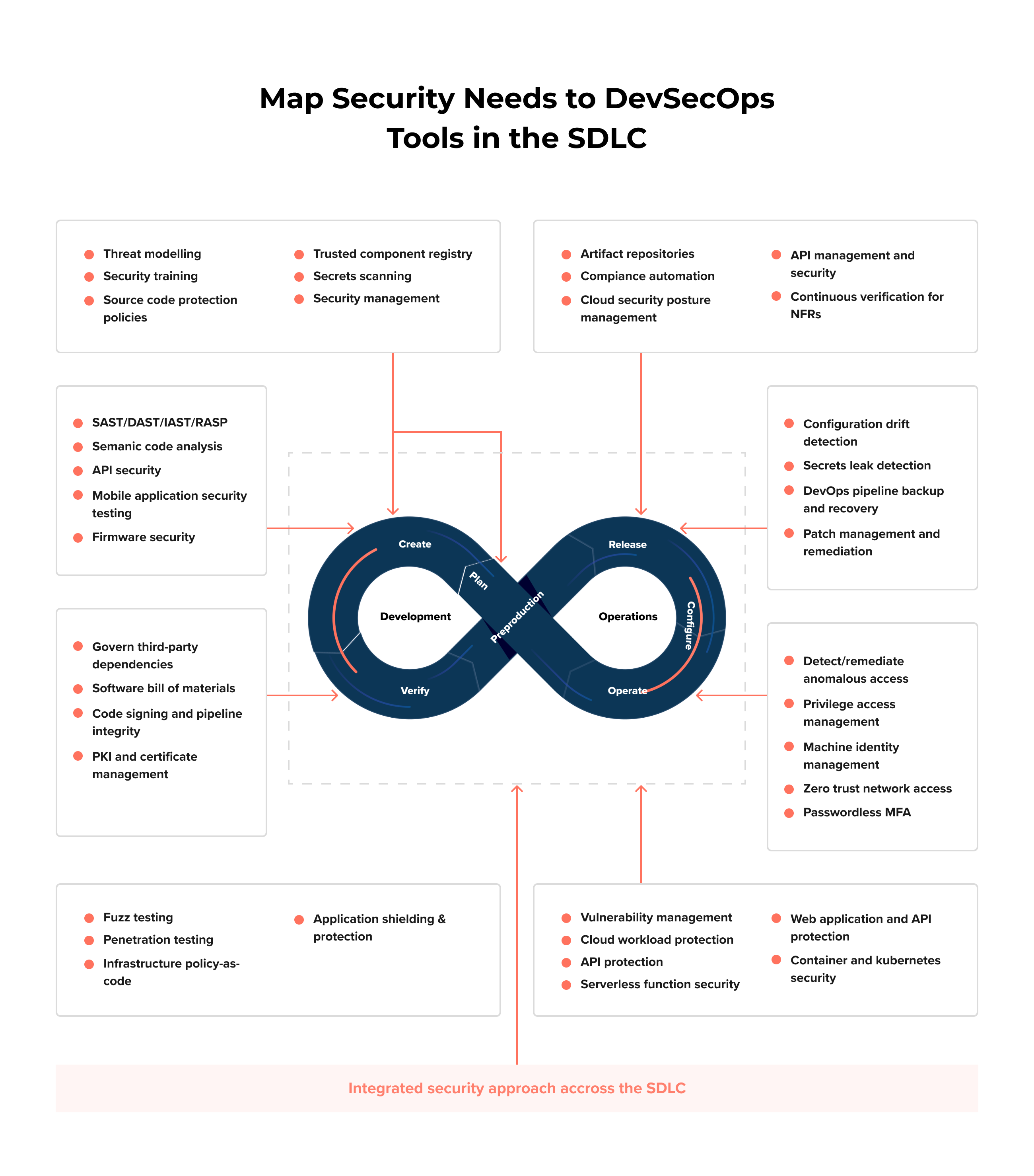
BLOG

BLOG
With the advent of complex technology ecosystems like agile development processes, cloud-native platforms, and the rising use of open-source software, the importance of continuous security and compliance has increased more than ever.
Consequently, software industry leaders must advise their teams to incorporate developer-friendly security tools into their DevSecOps pipelines.
Software engineering executives now have more authority over application security and a larger share of the security budget thanks to DevSecOps. You must navigate complex tools and techniques to protect the delivered applications and the software delivery process.
Gartner recently conducted an in-depth analysis for secure software delivery, and Appknox was recommended as a notable vendor for DevSecOps Tools.
Dive into this blog to uncover Gartner's key takeaways, which will help your business ensure its mobile application security tests are up to par.
Gartner's latest research emphasizes software application vulnerability as one of the most common attack vectors. Agile development techniques, cloud-native architectures, and open-source software can improve development speed, but they can also raise risks for security and compliance.
To reduce these risks, software engineering teams must build security directly into the SDLC using relevant application security tools oriented toward developers. This simplifies the process for developers and improves security.
The research also highlights the rising frequency of software supply chain attacks. Such attacks have complicated software security issues as the new attack vectors have shifted to software delivery pipelines and the tools used to build and deploy software.
It becomes just as important to protect the software delivery pipeline as it is to protect the software itself.
However, it is not that easy to keep software supply chains secure because they usually go beyond the boundaries of a single business entity. They often include a network of vendors, partners, and open-source ecosystems. Because of these threats, those in charge of software engineering must move Security to the left and into production.
This research helps software engineers choose the right DevSecOps tools to ensure software security throughout the SDLC.
Apart from highlighting the importance of maintaining compliance and Security throughout the SDLC, the Gartner report also highlights several other critical findings and recommends some security best practices to stay ahead of the existing threat landscape:
Leaders in software engineering must regard security and compliance as an ongoing process rather than treating development and production as distinct security issues. Instead, they must adopt an ongoing security strategy that satisfies three different needs:
Use solutions that effortlessly incorporate security into developer workflows while maintaining a high developer experience. This makes the software "secure by default."
They ought to use the right tools at each stage of the SDLC (including planning, creating, verifying, pre-production, releasing, configuring, and running).
Gartner suggests business leaders use security tools that decrease attack surfaces and address associated risks via ongoing risk analysis. The selection of the right tools at each and every stage of the DevSecOps ecosystem becomes important while considering this effort.
Protect the integrity of software delivery pipelines by ensuring provenance, visibility, and traceability, securing internal and external code dependencies, and controlling access to development and operational environments.
Software engineering executives must adopt integrated security and defense-in-depth methods for software development and delivery. This becomes even more critical if they want to take a continuous approach to security.
Moreover, automated security controls in development platforms benefit developers. Secure software must be designed by default to achieve full traceability between what is delivered, how it was made, and why it is required.
The picture below depicts the seven stages of the SDLC, along with the types of DevSecOps tools corresponding to each stage.
Software engineering leaders should collaborate with security and risk teams and their colleagues in infrastructure and operations to incorporate tools at each stage of the SDLC. They should use an integrated security approach that includes production, safeguarding software, and access to machines and environments.

According to the findings of Gartner's 2021 Enabling Cloud-Native DevSecOps Study, the majority of tech leaders are already employing the necessary tools and technology to integrate security in their development and production environments.
According to the study, 75% of respondents utilize web application firewalls (WAFs), 69% use static application security testing (SAST) in development, and 60% employ application security monitoring in production. However, other methods are being employed during development, including API security testing (46%), infrastructure as code scanning (40%), and mobile application security testing (31%).
To improve their security posture, a sizable portion of respondents additionally employ cloud workload protection systems (22%), cloud security posture management (19%), and a sizable amount of dynamic application security testing (DAST) (29%) in the production environment.
Appknox recognized as a Gartner notable vendor In DevSecOps tools for secure software deliveryGartner's latest research on the best "Security Platforms and Tools That Address the Needs of Different Phases of the DevOps Pipeline" lists Appknox as one of the best companies for mobile application security testing. Trusted by the best security teams at top global brands, Appknox helps mobile DevSecOps teams fill security automation gaps in their development pipelines that traditional SAST/DAST tools can't fix. With Appknox, mobile DevSecOps teams can effortlessly integrate static, dynamic, and API security tests into their CI/CD pipelines. This simplifies the process of locating potential bugs before they become issues, saving developers time by automatically pinpointing vulnerabilities to ticket systems without having to use extra tools or screens. |
In essence, DevSecOps is the automation of security checks, which include tests like static code analysis, malware scanners, vulnerability scanners, and other security-focused tests. Thanks to the automatic checks added early in the process, developers now have access to recent code rather than code written several weeks ago.
By fostering constant communication between the security and development teams, all members are responsible for safeguarding their products. This proactive strategy ensures any potential security issues will be quickly identified and remedied internally instead of externally assessed later, leading to improved quality assurance and heightened protection from threats.
While transitioning to DevSecOps, organizations should examine their toolchain and each tool's suitability for particular security responsibilities. While some businesses already have DevSecOps-ready tools, others may need to update or replace them.
The most recent research from Gartner unquestionably offers some crucial insights into the whats and hows of choosing appropriate DevSecOps solutions. It can assist your company in putting Security first from the beginning.

